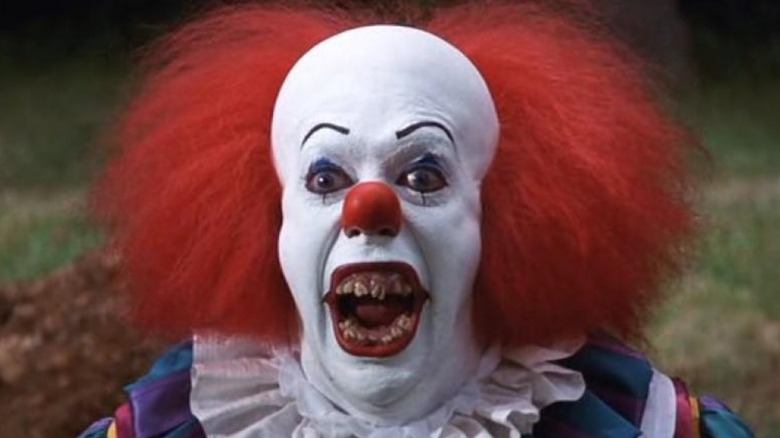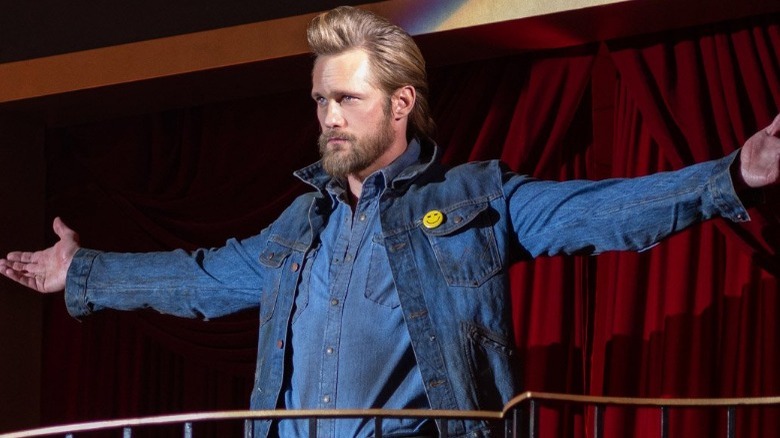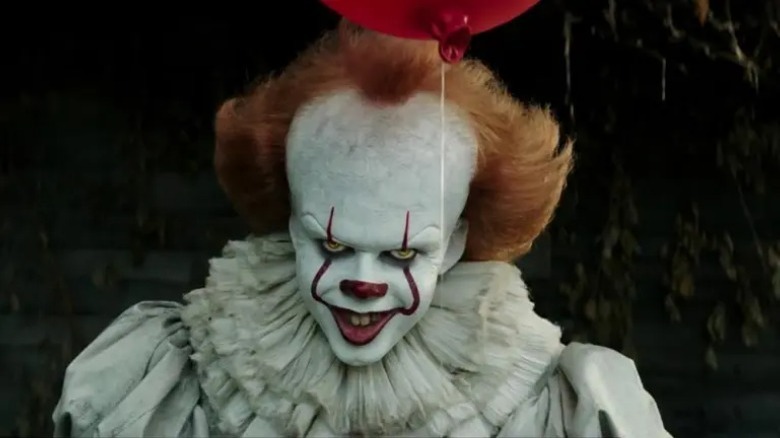Stephen King Shares Surprising Theory About His Greatest Villains
After over fifty years in the biz, horror master Stephen King knows a thing or two about writing a shocking twist. This week, the author delivered one for the ages — not in the pages of a new novel, but on Twitter. In response to an article from Screen Rant that compared two of his most iconic villains, Pennywise and Randall Flagg, the author tweeted: "Have they not considered the possibility that THEY ARE THE SAME ENTITY?"
The prolific horror novelist has a history of including both subtle and straightforward crossovers in his works, so this twist isn't exactly out of character. Of course, detail-oriented fans of his work — which includes over sixty novels to date — immediately ran with this idea. Thousands of fans have replied to the post to weigh in on the theory, with many even questioning the King of Horror on the intricacies of his own mythology.
King's tweet has a tongue-in-cheek quality to it, especially when considering how he frames the theory. Before dropping the bomb, he gives context by saying, "Screen Rant asks the question America cares about most (not): Who is the greater villain, Randall Flagg or Pennywise." The use of "(not)" indicates that this may not be a totally serious statement, but still, there's plenty of precedent to suggest he was being earnest. Could Pennywise and Flagg really be one and the same? Let's investigate.
Two legendary antagonists
Pennywise the Dancing Clown, the nightmare-inspiring jester who was immortalized on screen by both Tim Curry and Bill Skarsgard, originated in King's wildly popular 1986 novel "IT." The sewer-dwelling, fear-eating creature plagues the town of Derry every 27 years, but his mythology runs much deeper than a simple clown costume. Before he was Pennywise, he was a shapeshifting entity that crash-landed on earth millions of years ago in an asteroid. He's essentially a devil-like representation of the world's evil, one that finds his equal and opposite in the form of Maturin.
Maturin, another prominent figure in King lore, is a giant turtle that essentially created the world as we know it. King didn't actually come up with the World Turtle idea; several religious traditions, including Hinduism and those of Lenape Native Americans, actually include a turtle in their creation myths. Maturin appears not only in "IT," but also in "The Dark Tower." These books imagine Maturin as one of twelve deity-like beings that guard what essentially amounts to metaphysical pillars for our known world. "The Dark Tower" series is also home to the other half of King's equation, Randall Flagg.
Flagg first appeared by name in another of King's doorstop-sized books, the 1978 classic "The Stand." In the apocalyptic novel, he's a cult leader-like figure, drawing in the masses to create a violent, fear-driven society of his own. Although "The Stand" invented the character, King's longstanding fantasy series "The Dark Tower" deepened his backstory considerably. In most incarnations, Flagg is a sinister sorcerer who embodies an evil as deep as Pennywise's, albeit with a slightly more human face.
Overlapping evils
Pennywise and Flagg are King's greatest and most enduring villains, and both have often crept beyond the pages of the books they first appeared in. References to ominous events in Derry or to Pennywise's insanity-inspiring "Deadlights" have appeared in several of his novels, with the latter popping up just last year in the book "Later." The creature also bears some resemblance to a villain called The Crimson King, who employs the Deadlights in "Insomnia" and "The Dark Tower" series. Meanwhile, Flagg has appeared, sometimes under different names, in at least nine of King's novels. If the two major villains were a Venn Diagram, the overlapping section between them would be the Macroverse, a sort of metaphysical realm from "The Dark Tower," where both Pennywise and Maturin seemingly dwell.
All King-verse geekery aside, the author seems to encourage cross-text readings. In February, King sat down with /Film writer Eric Vespe and former /Film editor and friend of the site Scott Wampler on their long-running podcast "The Kingcast." The pair asked him if it's possible that several major King villains, all of which feed on emotions, are of the same species. King revealed that he doesn't conceptualize those three bad guys — in this case Pennywise, "The Dark Tower" villain Dandelo, and the force from "The Outsider" — as the same, but that "everybody's got to eat," including monsters.
The hosts of "The Kingcast" and other King aficionados are clearly on to something by connecting the dots between King's villains. Despite the impassioned fan response, King hasn't followed up on his bombshell tweet, but he doesn't need to. If you take away the aliases, intertextual references, and complex metaphysical lore that make Pennywise and Flagg who they are, what you're left with is evil. They're two bone-chilling embodiments of the worst qualities a person could ever imagine, turned even scarier by their seemingly unstoppable power. If Pennywise and Randall Flagg are the same entity, it's a thing as primal and timeless as a scream in the dark.


